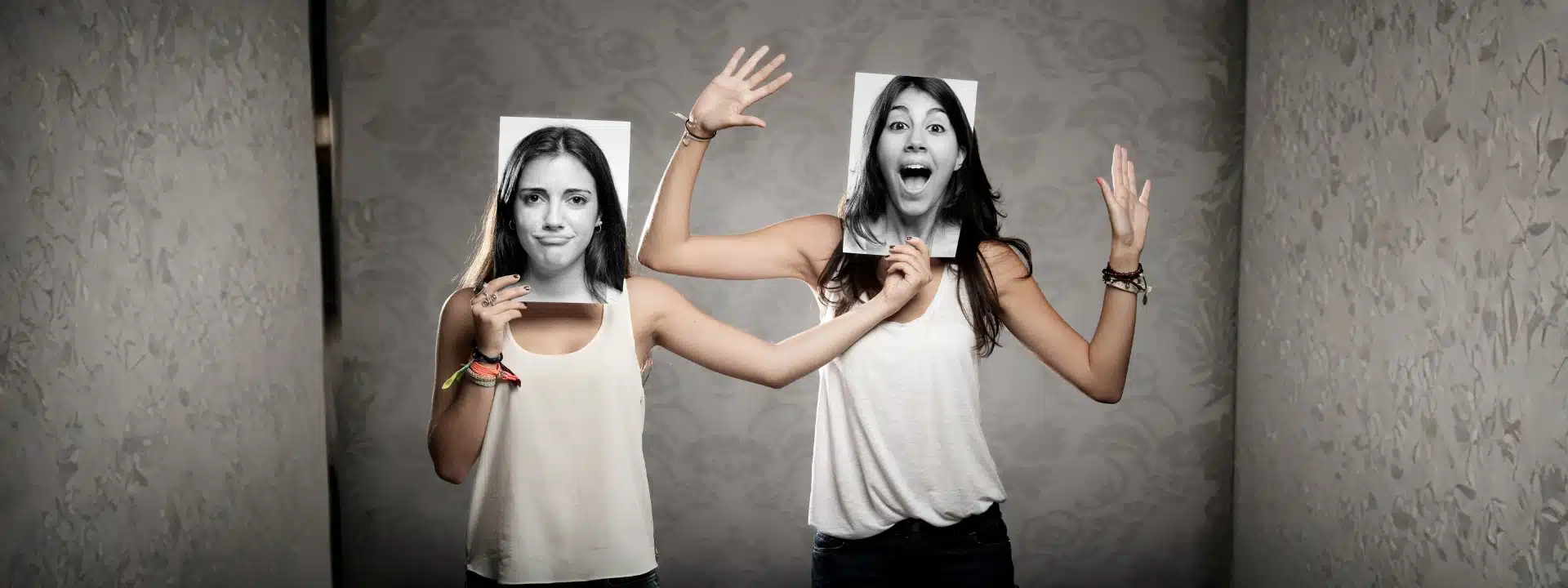When it comes to ‘treatment for social anxiety disorder,’ your struggle often starts before you even walk in the door.
You know the drill: rehearsing “hello” in your head for 20 minutes, then bailing on the party. That silence? It feels safer than the risk of saying the wrong thing.
But it isn’t about shyness or weakness. It’s about tackling a real, sweaty-palmed fear that hijacks your life.
I wasn’t shy—I had social anxiety disorder. And I desperately needed treatment. But when I first tried it, it felt like a bad joke. Still, I pushed through. It was awkward at first. Then it wasn’t.
Now, after going through treatment for social anxiety disorder, I speak up without rehearsing. I go to parties without hiding. And I live.
The Fear of Being Seen
Why Is It So Hard to Speak?
It isn’t shyness. It’s fear—raw, sweaty-palmed, heart-thudding fear.
The Impact
- Skipping parties
- Choking in class presentations
- Avoiding eye contact like it’s lava
Social anxiety disorder hijacks daily life. It messes with friendships, school, jobs—everything.
The Numbers Don’t Lie
In their systematic review and meta-analysis, Salari et al. (2024) conducted a thorough examination. They extracted data from 38 studies, analyzed it using a random-effects model, and searched six major research databases. What did they find?
- 4.7% of kids already feel it
- 8.3% of teens feel it stronger
- 17% of young adults feel it hardest
It gets worse with age. The older we get, the louder the fear grows. So yeah—it’s not “just nerves.” It’s a global crisis hiding in plain sight.
Facing the Fear
The First Step
Admitting it’s not “just nerves”? That’s bold. Reaching out? That’s next-level bravery.
Therapy Options
There are plenty of therapy options for social anxiety disorder. One such option is cognitive behavioral therapy (CBT). But is CBT effective for social anxiety disorder? Spoiler: yes, it’s more than just hype—it delivers real results.
Hall et al. (2025) tested this by analyzing 37 randomized controlled trials with 3,234 adults facing social anxiety. They compared three types of CBT battling the same fear:
- Remote CBT (RCBT): g = 0.90
- Individual CBT (ICBT): g = 0.95
- Group CBT (GCBT): g = 0.71
All three showed solid gains, with no clear winner. Translation? Select the CBT style that best suits your life.
CBT works by:
- Targeting the trash thoughts fueling anxiety
- Building lasting habits
- Teaching you to face fear, not run from it
So, if you’re wondering, “Is CBT effective for social anxiety disorder?” the answer is a confident yes.
Real-Life Example
A Reddit user nailed it by sharing their journey of overcoming social anxiety through CBT:
“I used to be so anxious about being in public and talking to people. I couldn’t order a pizza on the phone or do anything around others without feeling uncomfortable. It was tough getting into dating and relationships, too. Now? I don’t feel any of those things. I can order food with no problem, and sometimes I remind myself how anxious I used to be. I’m surprised how different it feels. I’m calm and relaxed in most situations.”
This story illustrates how CBT addresses the small things—like ordering food—that once seemed like an insurmountable challenge. And suddenly, life gets way easier.
Medication: A Helping Hand
When Therapy Isn’t Enough
Therapy works wonders, but sometimes fear digs in deeper. That’s when medication jumps into the ring.
What Science Says
Mitsui et al. (2025) updated the playbook with a fresh meta-analysis on SSRIs and SNRIs for social anxiety disorder. They scanned 33 SSRI and 6 SNRI studies — mixing global data with a Japanese twist.
Here’s the lowdown:
- SSRIs showed a 1.62 times higher response rate vs. placebo
- SNRIs followed closely with a 1.57 times higher response rate
- Both cut down social anxiety scores significantly (LSAS drop: SSRIs -9.65, SNRIs -11.72)
- Side effects? Dropout rates were similar to placebo — no mass escapes here.
Medication Must-Knows
- Always consult a healthcare provider before starting meds
- Keep an eye on side effects; report them fast
- Pair meds with therapy for the best knockout combo
Medication isn’t a crutch—it’s a helping hand. Ready to grab it?
Alternative Approaches
Natural Methods
Not everyone wants a pill bottle on their nightstand. If you’re looking for treatment for social anxiety disorder without medication, natural methods have your back. And guess what? They work.
Mindfulness, movement, and human connection do more than sound nice.
A 2025 study by Jiang et al. tested mindfulness on 66 college-bound teens with raging social anxiety. The researchers created two groups: one received a mindfulness-based intervention (MBI), while the other served as a control group, sitting on the bench.
Results? Mind-blowing.
- MBI directly reduced social anxiety
- It also worked indirectly by:
• Increasing mindfulness
• Reducing emotional freak-outs
• Calming uncertainty
In simple terms: less dread, more chill.
Mindfulness didn’t erase fear. It rewired how they responded to it.
The Natural Lineup
- Mindfulness: trains focus, reduces anxiety triggers
- Exercise: burns cortisol, builds confidence
- Support Groups: shared struggle, shared strength
These don’t replace therapy—but they’re fierce sidekicks. Ready to rethink the “natural” way?
The Journey to Confidence
Progress Takes Time
Confidence isn’t Amazon Prime—you don’t get it in two (2) days. But the good news is breakthroughs don’t always take months either.
Case in point? The Bergen 4-Day Treatment (B4DT). Hansen et al. (2024) tested this turbo-charged CBT method on 30 patients with social anxiety disorder. There were no long waits or endless sessions—just four intense days of targeted therapy.
The Results?
- Treatment response rate: 89.7%
- Remission rate: 55.2% (in 3 months)
- Symptom drop (SAD): Huge (d = 1.94–2.66)
- Bonus: Also cut down anxiety and depression
And patients loved it—high satisfaction rates across the board.
Bottom line: Whether it’s 4 days or 4 months, progress looks different for everyone. The real flex? Sticking with it.
Supporting Others
Your friend with social anxiety doesn’t need a savior. They need a human. A chill, non-judgy, supportive human.
Wondering how to help someone with social anxiety disorder? Science has answers. Liu et al. (2024) examined data from 104 studies (yep, over 107,000 people) and found this: the more social support someone has, the lower their anxiety (r = –0.233). That’s not just feel-good fluff—it’s statistically solid.
So, Here’s How to Help
- Listen without judgment – No fixing, just hearing.
- Encourage help – Therapy isn’t a weakness; it’s WiFi for the soul.
- Be patient – They’re not being dramatic. Their brain’s stuck in fight-or-flight mode.
Support isn’t about giving perfect advice. It’s about showing up, holding space, and offering calm. Liu et al.’s meta-analysis proves your presence rewires anxiety levels—across cultures, pandemics, and personal battles.
So yeah. Your support? It’s not small. It’s science-backed magic.
‘Fear Ends Here’: Find the Right Place and People.
Picking a clinic isn’t just Googling “best mental health clinics for social anxiety disorder.” You need people who get it. A place that feels right. Experienced therapists? Yes. Custom treatment? Absolutely. A space that says, “You’re not broken. You’re becoming.”
Alter Behavioral Health brings the full package. Smart science. Kind humans. Zero judgment.
They don’t do cookie-cutter therapy. They meet you where you are.
My first session was awkward as hell. By week three, I was talking—like, really talking.
Now, I speak up. I make plans. And I breathe easier. So, when you’re ready to trade fear for freedom, Alter Behavioral Health is already on your side. Contact Alter now.



